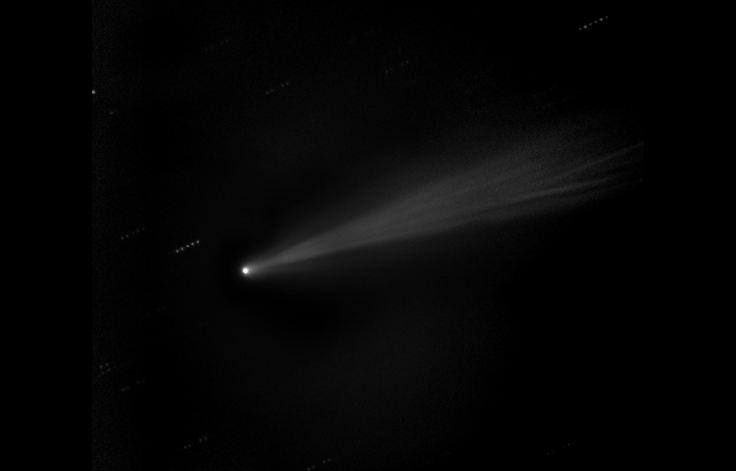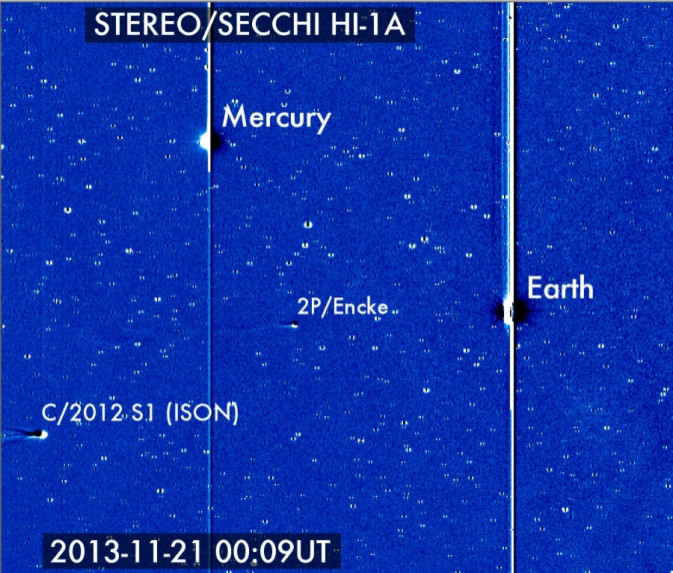Comet ISON: NASA Images Reveal Object Is Still Intact; Interactive Model Helps Locate Current Position

Comet ISON, the sungrazing space rock that has travelled for more than a million years and is fast approaching its encounter with the sun, is still in one piece, according to newly released images from NASA.
The space agency said on Friday that Comet ISON entered the field of view of the HI-1 camera on its Solar Terrestrial Relations Observatory, or STEREO, on Nov. 21, 2013, and the comet showed up clearly, appearing to be intact.

Catalogued as C/2012 S1, Comet ISON was first discovered 585 million miles away on Sept. 21, 2012, by two Russian astronomers, Vitali Nevski and Artyom Novichonok. Scientists were instantly intrigued after the discovery as it is the comet’s first trip into the inner solar system.
On Thanksgiving Day, Nov. 28, 2013, Comet ISON is expected to finally slingshot around the sun. At this point, astronomers believe, ISON’s inward journey through the solar system will end -- either because it will break up due to the intense heat and gravity of the sun, or because it will speed back away and may never return.
According to NASA, during the last week of its inbound trip, Comet ISON will enter the fields of view of several of its Heliophysics observatories. The comet will be viewed first by instruments aboard NASA’s STEREO, which will later be joined by the combined European Space Agency/NASA Solar and Heliospheric Observatory, or SOHO.
After that, it will be NASA's Solar Dynamics Observatory, or SDO, that will view the comet for a few hours during its closest approach to the sun, known as perihelion. That will be followed by the X-Ray Telescope on the JAXA/NASA Hinode mission that will look at Comet ISON for about 55 minutes during perihelion.
Meanwhile, folks at solarsystemscope.com, a website that provides online simulation of the planets, including real-time positions and orbits, stars and constellations in the night sky, has developed an interactive model dedicated to Comet ISON. The model visualizes the current position of comet, assumed trajectory and all important moments.
The interactive model also includes a view from Earth mode, which shows the position of Comet ISON in the night sky.
Have a look at the model here:

© Copyright IBTimes 2024. All rights reserved.





















